Fine food, beautiful bookshops and low prices – why Porto should be your next port of call
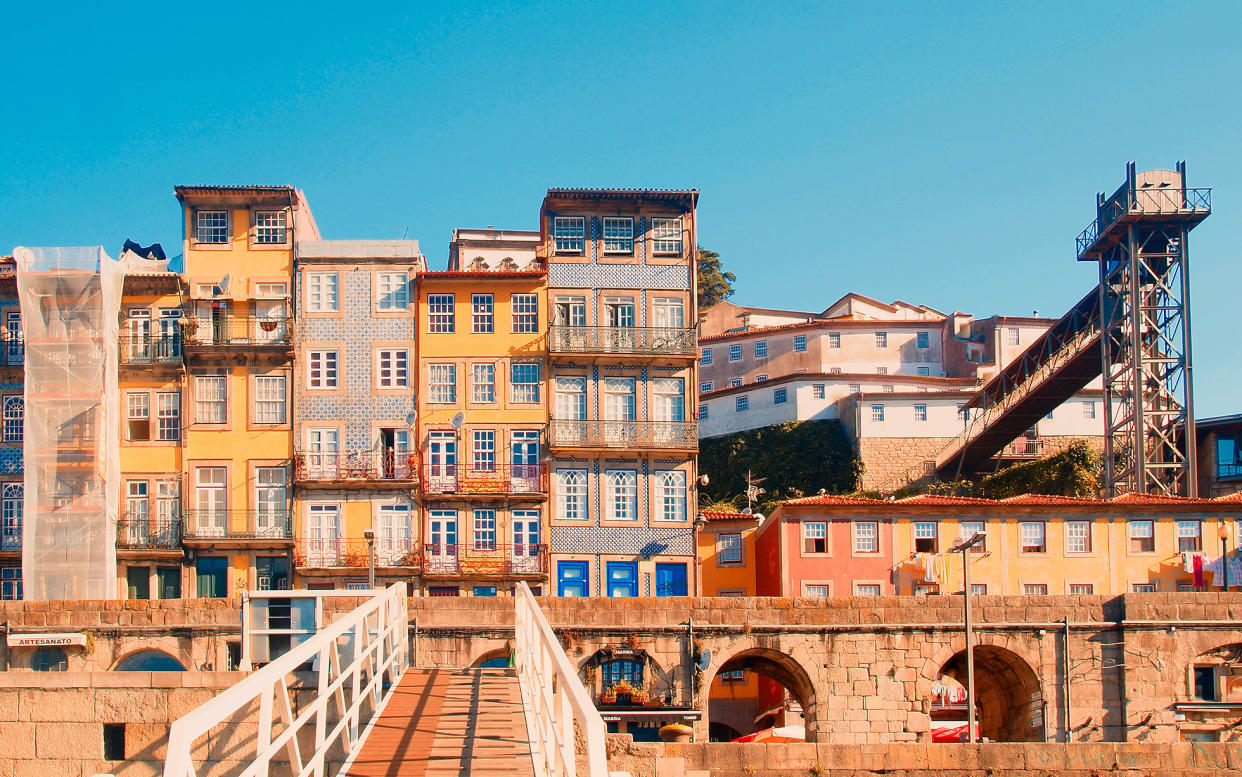
We were doing a tasting under a portrait of the 19th-century character Dona Antonia Ferreira, famed for her port and also for capsizing on the river Douro and surviving due to the spread of her crinoline skirts.
“How long can you keep a bottle of port once it is opened?” asked one of the group gathered around the glasses of white, ruby, tawny and late-bottled vintage at the Ferreira Port House in Porto, north-west Portugal.
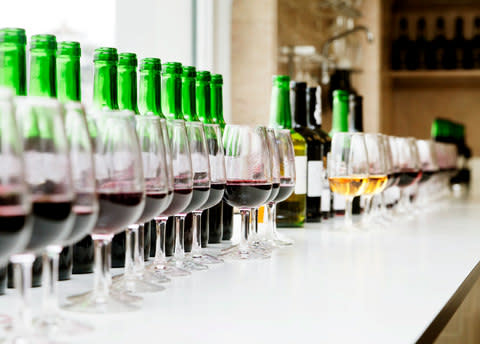
“In my house,” said winemaker Antonio, “a bottle of port lasts only for the duration of a meal!”
Those who were brought up with the port decanter being dusted down for its annual Christmas outing were clearly cheated of tasting the drink at its best. Across the range, ports should all be kept cool and drunk fast. As a broad rule of thumb, if a bottle has a normal cork, it is best drunk in one sitting; if it has a bar-top cork, it can be kept in the fridge for a few days.
Those who were brought up on Thackeray’s Vanity Fair and the delights of Dickens’ A Christmas Carol, in which port wine is boiled to make “Smoking Bishop” (you can find the recipe in Eliza Acton’s Modern Cookery of 1845) will regard port as a drink of times past.
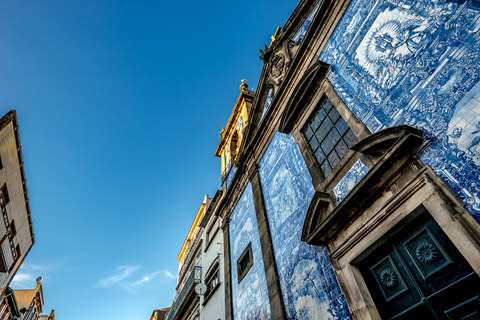
Wandering the streets of Porto today will dispel any such impression. Here, the sound of ice clinking in a glass of white port and tonic, served with a slice of orange, is interwoven with the babble of a youthful crowd. Port remains on trend in a city booming with new temptations and attractions and an influx of visitors.
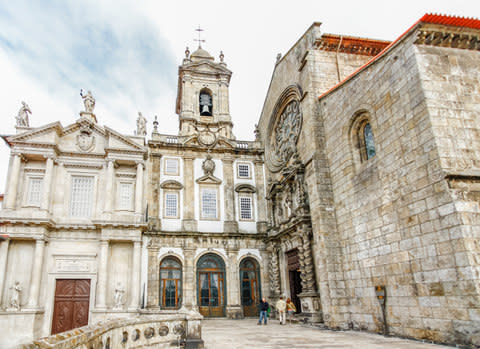
The latter might not come exclusively for the “divine nectar of the gods” but they will leave having almost certainly taken their fill of it.
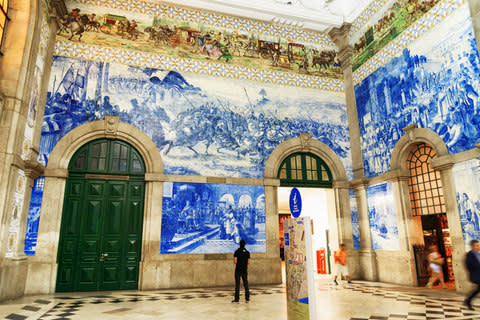
But there is much else to do and see here in the grey, granite streets of the city that gave its name to Portugal – a country, whose creative burst, post-recession, is changing the face of its landscape through a quiet re-emphasis on its home-grown charms. Brands such as Claus Porto are a perfect example.
Last year marked the 130th anniversary of this label that built its name on hand-crafted soaps, infused with fragrances drawn from the Portuguese countryside and hand wrapped in chic belle époque packaging.
The world's most spectacular railway stations
June saw the opening in Rua das Flores of a flagship store where you can try out samples from its new range of liquid soaps over a marble basin or buy the limited edition scent, Le Parfum, conceived by perfumer Lyn Harris to encapsulate Portugal in a bottle.
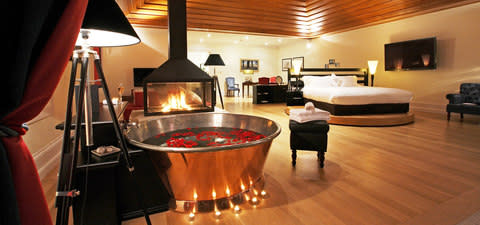
Its unique smell was inspired by an early morning walk after the dew had lifted, when Harris came across “an old fig tree and hidden at its side a arbary fig tree”. The fruity undertones of the barbary fruit, fused with the green and wet fig leaf, immediately seized her. “For me, that smell was perfection,” she wrote.
Rua das Flores is itself more than worthy of a wander as it has been almost totally refurbished, its fa?ades now gleaming with restored tiled frontages in blues and greens and attractive boutique shops.
Portugal | The cheapest country in Western Europe
When it is time for a coffee, or bica, stop at Café Guarany, as much for the view as for the excellent Portuguese coffee.
This grand avenue, lined with stately granite fa?ades and dominated by the town hall, is Porto at its multi-layered best. Churches on almost every street corner mix glazed blue and white tiles with their characteristic granite.
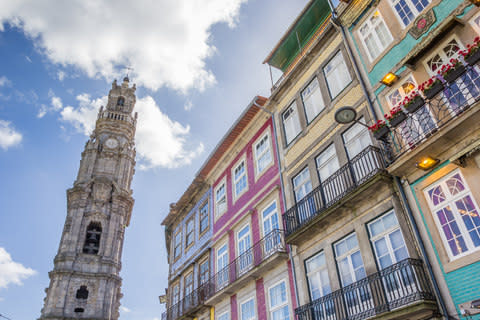
Of particular beauty is the Capela das Almas (Chapel of Souls) near the city’s main shopping street Santa Catarina, with its exterior tiles painted with scenes from the lives of the saints.
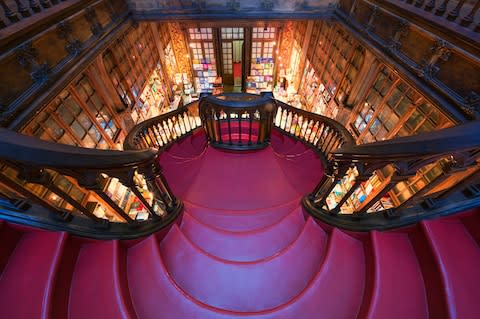
Visit it at dusk when the darkening blue sky and the smoke from the roasting chestnuts nearby blur the line between heaven and earth. For interiors, head straight to the church of St Francisco, the only Gothic church in Porto; the severe, grey exterior gives no hint of the joyful, burnished warmth within.
16 of the world's most beautiful bookshops
Its richly gilded, highly ornate, baroque wood carvings stand as a testament to the skill of Porto’s craftsmen in the 17th and early 18th centuries.
A short walk from there, via the Sao Bento railway station – an early 20th century landmark that boasts 20,000 glazed tiles depicting highlights of the nation’s history – will bring you to the Unesco-listed Ribeira, where houses in every hue tumble down to the river Douro.
This is crowded, authentic, medieval Porto, where washing still hangs across the coloured frontages and the cobbles, now covered by souvenir stalls, sing of brawls from long ago.
It is best seen from the other side of the river, Vila Nova de Gaia, where the port houses are located. From there, the coloured, narrow houses line up like a crooked keyboard which, when played, one could imagine, would reveal the heart of the city above it.
It used to be necessary to cross to the other side by means of one of the six bridges. One, Dona Maria Pia, was designed by Gustave Eiffel; another, the Dom Luis I Bridge, boasts one of the biggest forged iron arches in the world.
Since July, however, two river taxis have crossed the Douro daily as an alternative. Inspired by the design of the classic old rabelo cargo boats, these were launched by Adrian Bridge, CEO of the Fladgate group whose luxurious Yeatman Hotel lies in terraces above Taylor’s Port House (also part of the group).
Among the hotel’s draws are a two-star Michelin restaurant and a decanter-shaped infinity pool from whose rim you have a bird’s-eye view of Porto. Next year sees Bridge’s reopening of the Infante Sagres Hotel in the city centre, complete with a Vogue Café.
The river taxis are convenient for exploring the city on foot, with a dock at the Ribeira and on the Vila Nova de Gaia side, just yards away from the newly opened Mercado Beira Rio. In this little market you will find the very best of Portuguese cheeses.
Try the unctuous Serra da Estrela – a cured sheep’s milk cheese, in production since the 12th century; or the salty, unpasteurised, handcrafted Azeitao, from near Lisbon.
For olive oils, another pillar of the Portuguese kitchen, head to Oliva & Co, a shop which offers olive oil tastings and knowledgeable explanations on the regional differences between the oils. Try the world-beating Casa de Santa Amaro Prestige, a sublimely balanced extra virgin olive oil made in the Tras-os-Montes region inland from Porto.
A new endeavour which combines two of the most loved national flavours can be found near the Clerigos Tower. Casa Portuguesa do Pastel de Bacalhau is a shop where, from behind a pane of glass, you can see a woman preparing cod fish cakes.
The twist is the addition of a nugget of Serra da Estrela cheese buried inside. Climb the stairs while you are waiting for your order, and see a first edition of poet Fernando Pessoa’s best known work Mensagem (Message) exhibited, and up another floor to an old library, books lit under chandeliers, tables and chairs ready for the fish cakes accompanied by a glass of Sandeman port.
This is sold by the shop as “the taste of Portugal in 60 seconds”. Somehow port, poetry and pasties harmoniously interweave as a reflection of this country, whose identity – to borrow words from Pessoa’s Mensagem – could be described as “the voice of the land longing for the sea”.
Don’t leave the area without climbing the Clerigos Tower, the city’s most prominent landmark, built in the first half of the 18th century by Florentine architect Nicolau Nasoni, who is buried in the adjoining church. It is Porto’s best example of baroque architecture and at 246ft (75m) the tallest tower in Portugal – the view is worth the effort.
The most famous stairs in the city, though, are probably in the neo-gothic bookshop Lello, which were supposedly the inspiration behind Hogwarts in the Harry Potter series, which J K Rowling had started to work on while living in Porto in the early Nineties.
A far more recent construction is the Casa da Musica, designed by Rem Koolhaas, and opened in 2005. It is an extraordinary building, providing a stimulating immersion into the world of music. From that part of Porto it is not too far to then dip into the Serralves Park – home to the Museum of Contemporary Art designed by Alvaro Siza – and the pink, art deco Casa de Serralves.
When you’ve had your fill of culture, head to Ohsomm whose LBV and tawny ports from here are ones to savour. The new company’s ambassadors are restaurateur Jackson Boxer and Christopher Cooper, whose reputations should assure hesitant purchasers that the wines and ports for sale will not be a disappointment, Cooper having cut his teeth in Gordon Ramsay’s empire, as head sommelier at the Savoy Grill and wine consultant for the Soho House group.
Even more persuasive for the non-wine buff is the latest addition to the team: catering company Tart London and the focus of founders Lucy Carr-Ellison and Jemima Jones on pairing the drink with various dishes.
Try their port-centric recipes and cocktails on these pages as proof that port should never be relegated to the back of the drinks cabinet.
Getting there
Mary Lussiana travelled as a guest of Cox & Kings (020 3642 1861 coxandkings.co.uk) which has three-night short breaks to Porto from £425 per person including flights, transfers and breakfast.
Ohsomm (020 3176 9702; ohsomm.com)
Where to stay
Just-opened Torel Avant Garde makes a perfect base from which to explore the city, with views from many of its rooms on to the Douro river.
It has a small swimming pool, a spa, a restaurant with Portuguese modern food and bold décor with rooms paying homage to pioneers of the arts from Salvador Dali to Oscar Wilde. Doubles from £119 including breakfast.